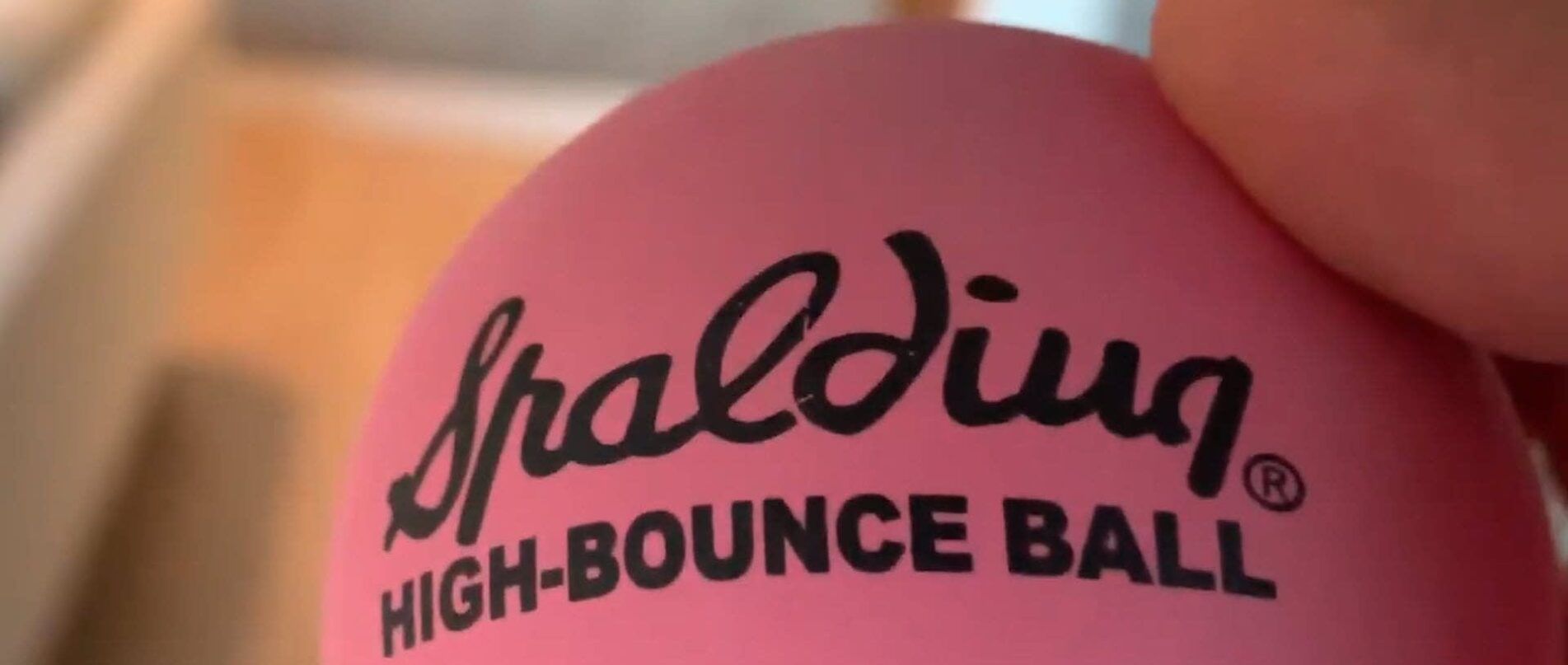
Prompt Images
Growing up in New York, stoopball—shorthand for stoop baseball—was a favorite activity. It required only a ball, two players, and a stoop. As long as one had a ball in a pocket, opportunity presented itself often.
Spalding and Pennsy Pinky were the only two viable rubber ball choices.
The former could be had for a dime or fifteen cents. The Pennsy was the same size but pinker and more substantial. It commanded a quarter or more and was considered premium. With time and use, any ball would split at its seam and come up lame and useless. It was a sadder affair when the Pennsy was the victim of age, the fatal blow usually struck by a just-right meeting with the point of a step.
The game was straightforward: at bottom, a version of baseball. One put the ball in play by throwing it against a short flight of stairs that fronted every apartment building and home in Brooklyn. (Likely every other borough of our great city, but our young lives were very local. Jersey? Cleveland? Houston? Not in our consciousness.) The ball careened off the steps and toward one’s opponent playing the field and whose task it was to catch the ball. A clean catch on a fly off the stoop? One out. Three outs to an inning. Drop the ball? Error. One bounce after the drop was a one-base error, two bounces were a two base error… all the way to a four bounce error, which would clear the bases.
If the “batter” was strong enough, the ball flew over the fielder’s head and had to be chased down. As with a dropped ball, one bounce before retrieval amounted to a single, four bounces a home run.
A simple game: catch the ball and retire your opponent after three outs.
Overpower your opponent and continue “batting” indefinitely. Sustained offensive possession was the goal, but if the defender was a poor one, one’s arm could get sore. Best to choose an opponent to match one’s own skill and age level.
There was room for gamesmanship. Slam the ball for extra base hit after extra base hit and your opponent might “cheat” a bit and move deeper off the line. An attentive “batter” would note that and softly toss—often after a feigned mighty wind-up—a cheap single into the unguarded ground in front of the retreating defender, who could recover and retrieve the dumped ball after one bounce. Keep your opponent guessing.
Nailing the point of the step—architects call it a nosing—was a special delight. It was hard to make the thrown ball collide with the point just so. Oh, but when it did, the ball flew majestically over the fielder’s head, almost always resulting in a hit unless the fielder had uncommon leaping ability, the quickest of reflexes, and somehow snared the line drive. These rare events precipitated internally felt and competing emotions: “That’s a hit!” vs. “Oh, shit! It’s over my head.” The top point was both coveted and feared; if met perfectly, the ball rocketed on a greater trajectory, a certain hit. Miss it by a millimeter and the ball would mock you, lolling around the top step like a drunk trying to find his way home; automatic out.
No bat, bases only in our minds, a game filled with action and imagination.
There was an etiquette to the proceedings. Before assaulting the stoop with the ball, one was expected to blurt out the game situation: Second and third, one out; runner on first, no outs. The score was generally added; one might boast, Four-nuthin’/nobody out, if one had thrown a pointer and landed a bases-clearing grand slam homerun to take command of the festivities.
There was a limit to the etiquette. Never was the fielder asked if he was ready. The announcement of the game situation and the score was a call to action. The ending of the brief recap meant the ball would be put in play in the next microsecond, sometimes even simultaneously with the announcement’s last syllable.
“Hey, I wasn’t ready…” was never a complaint that was honored.
We’d play after school, before school waiting for the bus, on our days off, until our moms called us in for dinner, even as it was getting too dark to see. We’d play into the gloaming on hot summer nights and in the winter if there was no snow on the ground, winter coats abandoned and flung to the side because one could not get up a good head of steam to slam the ball into the steps wearing a heavy parka.
Lost balls were a horror; even a dime for a Spalding was not easy money.
Pointers that flew into the street might ricochet off a speeding garbage truck heading down Ocean Avenue toward Glenwood Road, then rebound majestically into the air after striking the Mister Softee truck headed in the opposite direction toward Avenue H. But would-be lost balls were found surprisingly often; either right away because our young and sharp eyes were riveted on the ping-ponging in traffic, or within minutes—sometimes days—of searching as we spied the ball nestled between a whitewall and a curb. We never stopped looking, particularly if it was a Pennsy.
The Giants and Dodgers had been gone for years, having skulked away in the night to California. The Mets were young and lovable, but sucked. The Yankees’ dynasty was nearing its end yet still consumed our city’s collective consciousness. Stoopball made us all Mickey Mantle even as the Mick was nearing his athletic end.
“Got a ball?”
“Yeah, let’s go! Top of the first, nobody on, nobody out.”
END



